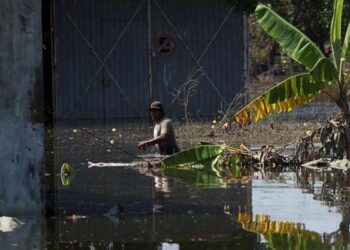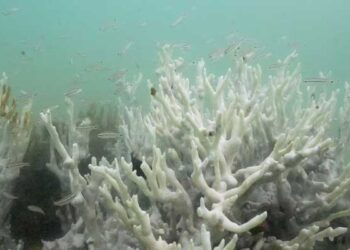Select Language:
Two herders in Samburu, Kenya, raised urgent pleas for divine protection as they watched a herd of camels race toward nearby acacia trees, undeterred by the parched riverbed that hasn’t seen rain since April. Sitting beside a well, Chapan Lolpusike recounted how his cattle and oxen all perished during the severe drought, the worst in forty years, driven by consecutive years of scant rainfall in 2021 and 2022.
Following this devastating loss, Lolpusike shifted his focus entirely to camels. “We no longer keep cattle at home. Now we only raise camels,” he said, as a member of the semi-nomadic Samburu community. Camels’ ability to thrive on dry grasses, survive over a week without water, and produce up to six times more milk than cattle makes them a vital resource amid the region’s increasing climate hardships.
In response to repeated droughts that wiped out about 70% of Kenya’s cattle in arid and semi-arid areas, local authorities launched a camel program in 2015. This initiative aimed to combat malnutrition among pastoralists, distributing approximately 5,000 Somali camels—an breed larger and more productive than native herds—including 1,000 in just the past year.
Lolpusike, who was unfamiliar with camels until 2023, now owns a dozen. In his simple manyatta, nestled within a shrub-covered savannah, the camels peacefully chew dry grass while villagers aspire for every family in the district to own at least one. “If the drought continues, cattle will disappear entirely,” explained village administrator James Lolpusike, who is not related to him. While disease poses a risk to camel herds, the sight of these animals becoming commonplace in the community indicates positive change, including healthier children, according to the village leader.
Camels are especially valued because they can be milked multiple times daily, even during dry seasons when cattle are usually neglected due to lack of pasture. “Cows are only milked when the grass is green,” said Naimalu Lentaka, 40. “During the dry season, camels still produce milk—that’s the key difference.” As a result, families are increasingly dependent on these animals and their owners.
The region celebrates the camel’s rising prominence, notably through the Maralal International Camel Derby held in late September. Around 40 camels competed in this endurance race, with the winner completing 21 kilometers—about half a marathon—in just over an hour and twenty minutes. The event emphasizes cultural harmony, with camels symbolizing peace and serving as a means to reduce conflict over resources. Moving cattle to more fertile areas during droughts often sparks violence among herders, but camels tend to remain where they are, preferring to stay in their current locations—even as they require water themselves. Locals continue to pray for rain, hoping the drought does not worsen their already difficult situation. “We just pray things don’t get any worse,” Lolpusike said.







